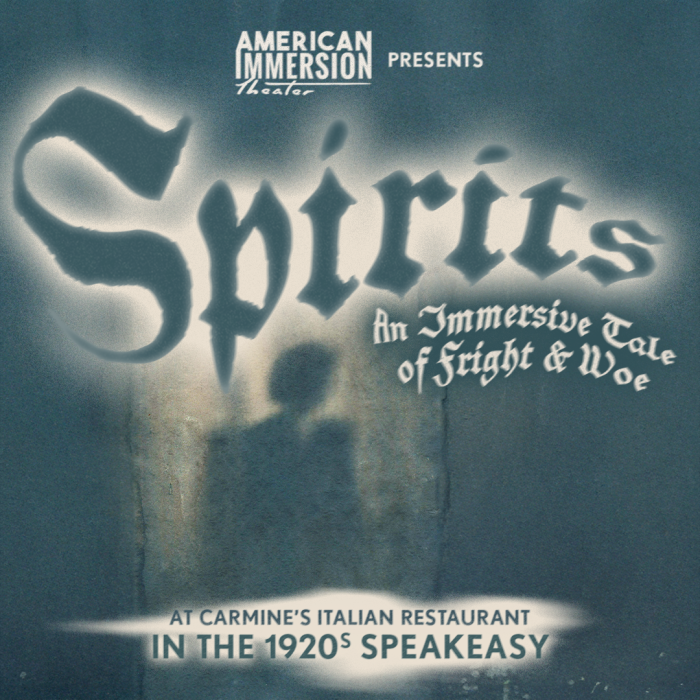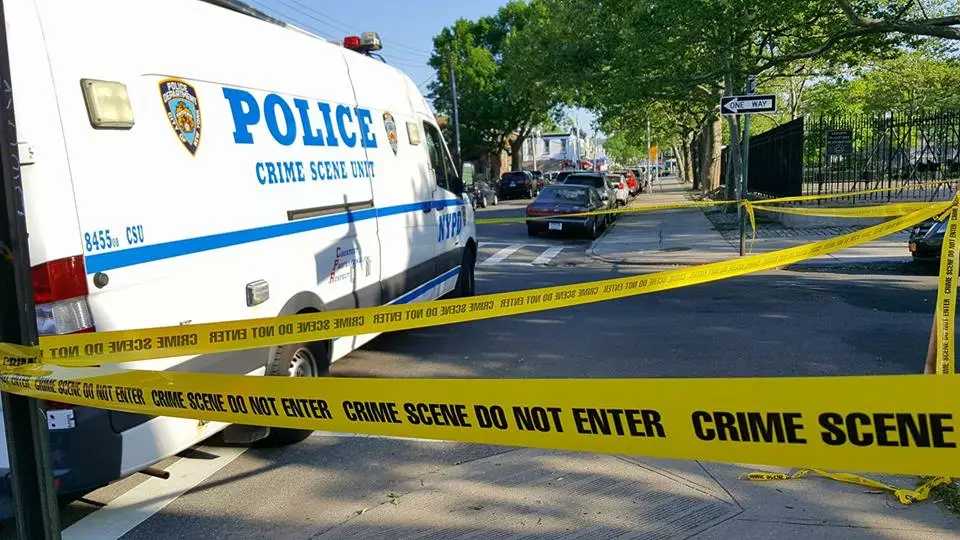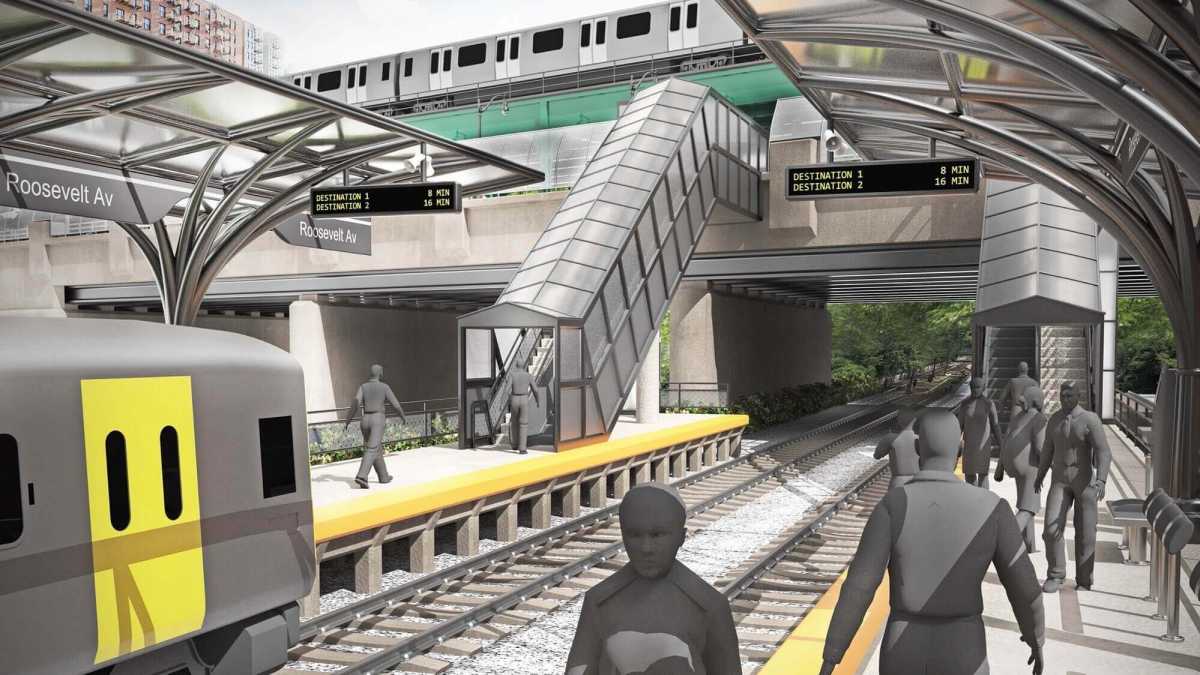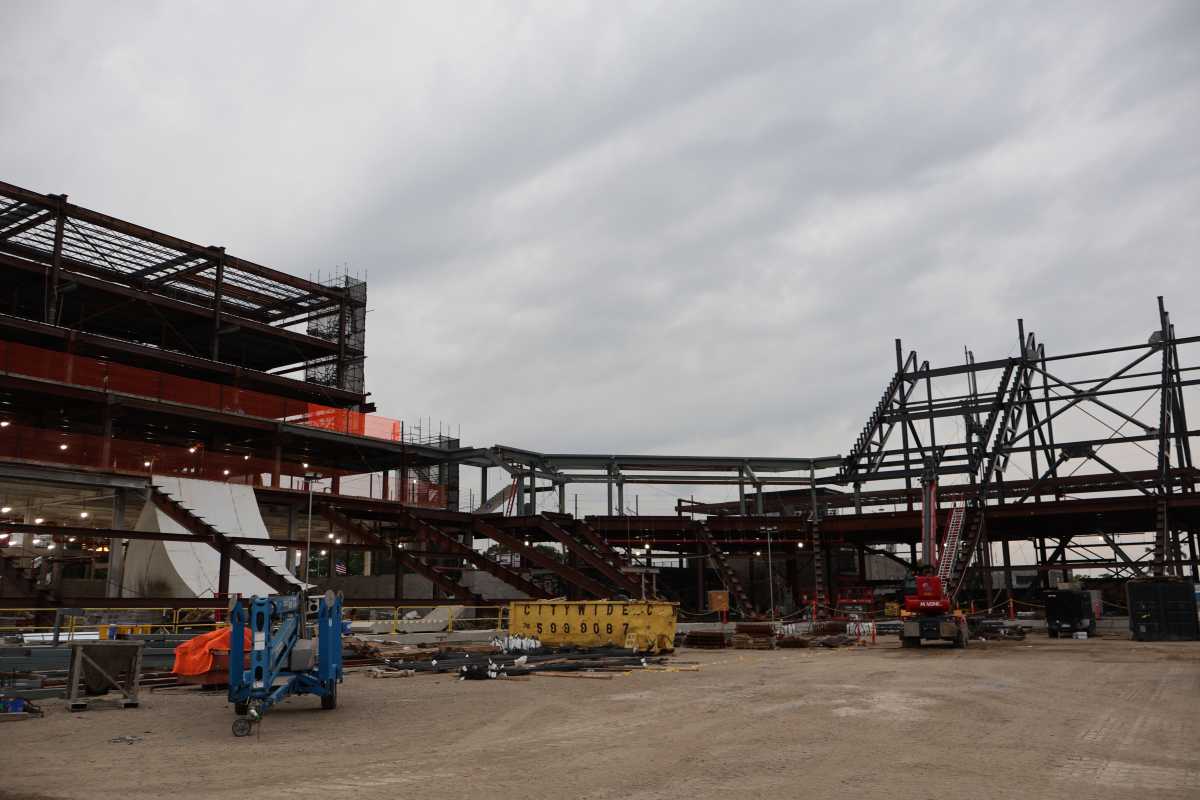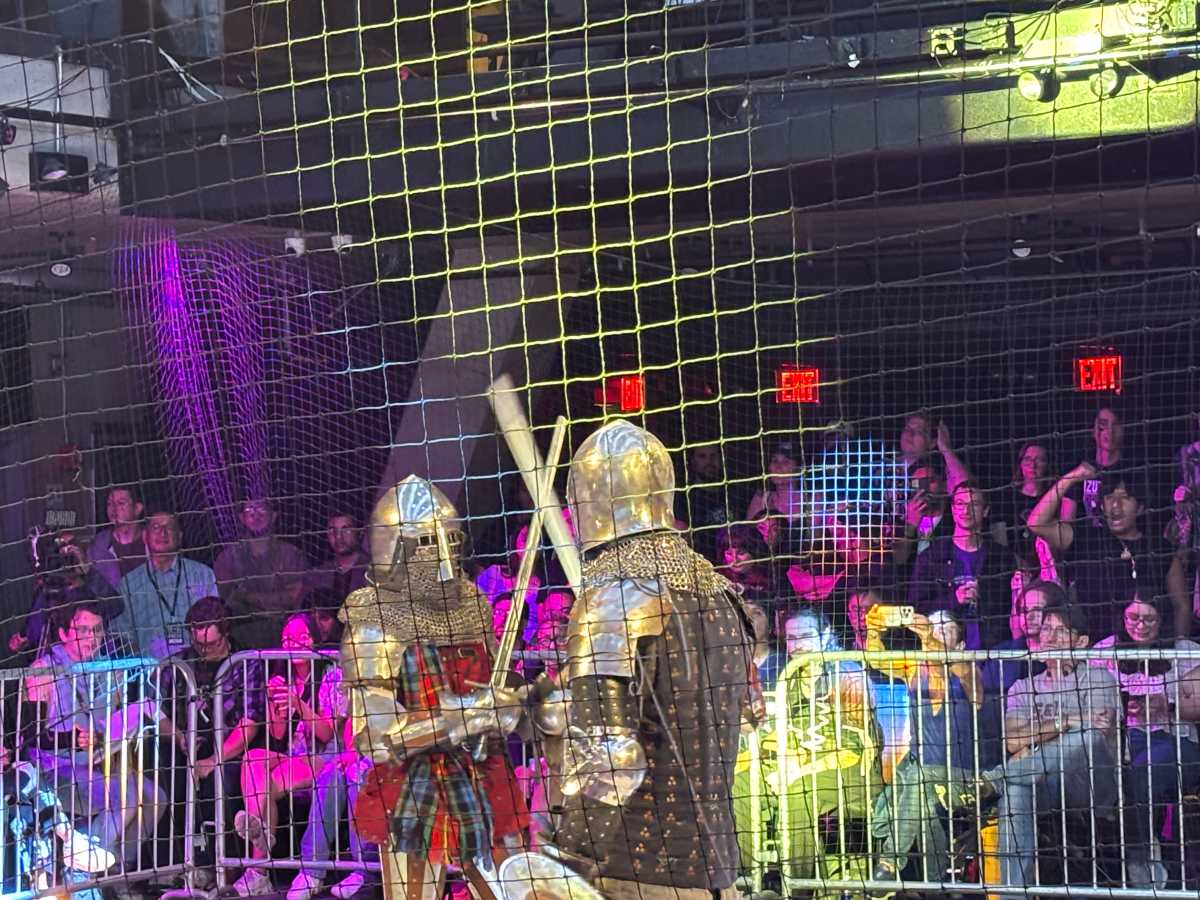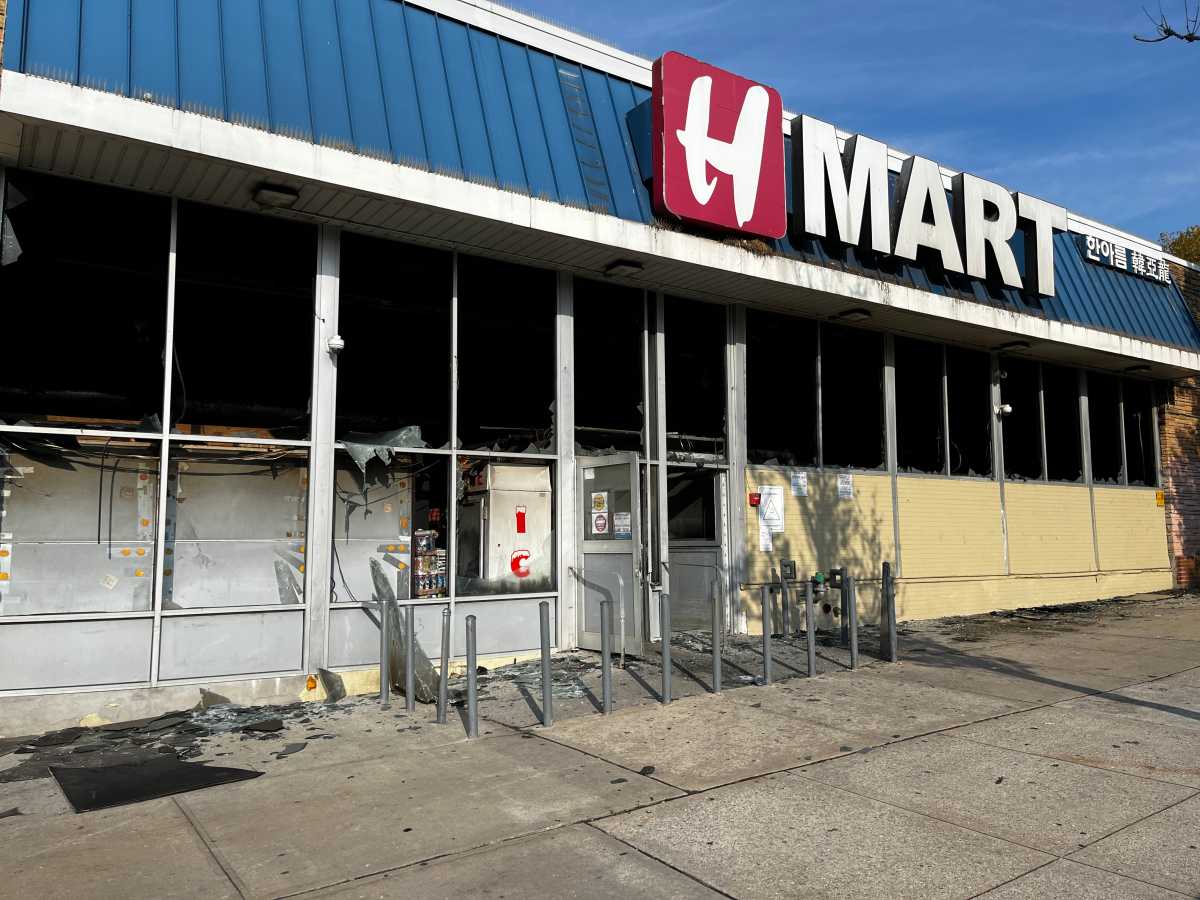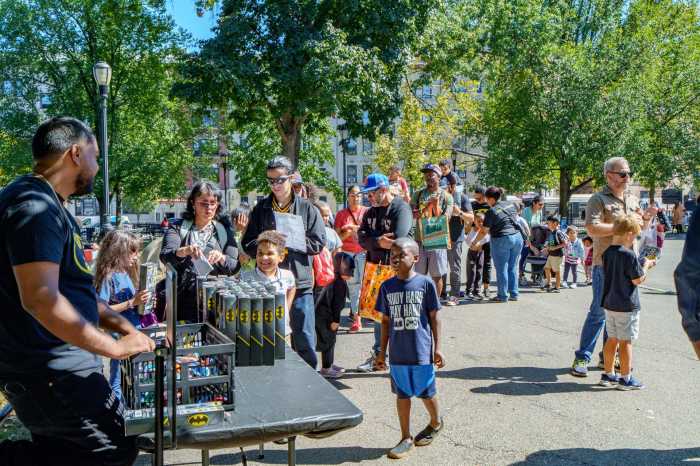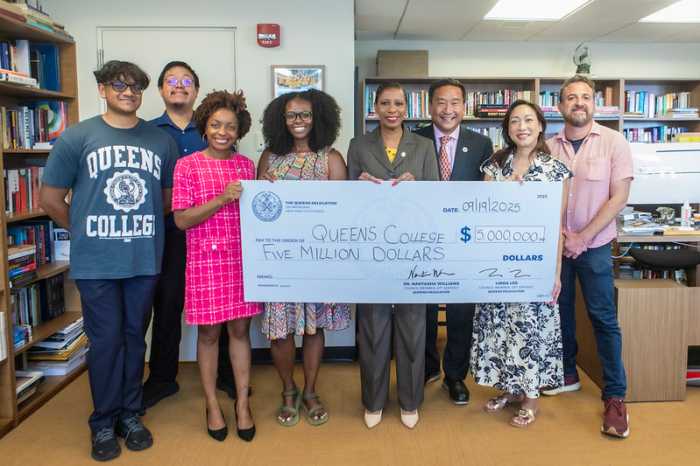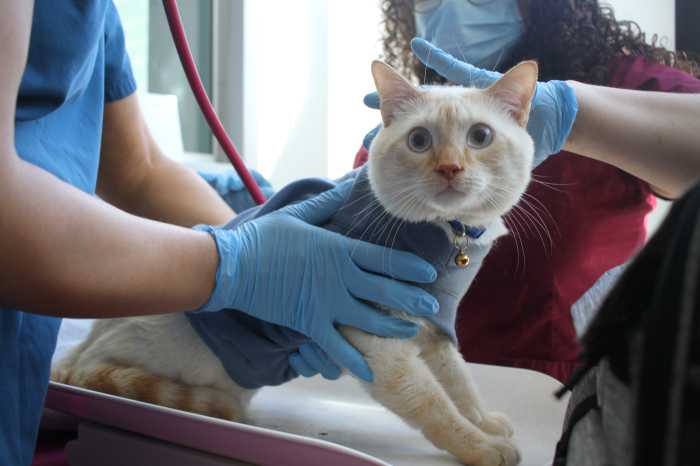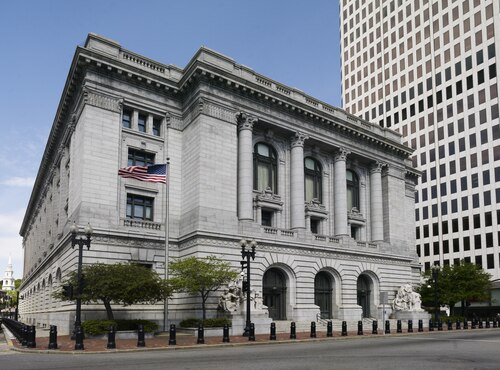By Julie Shapiro
A new visitor center next to the African Burial Ground tells the story of the thousands buried there more than 200 years ago.
The center, opening this Saturday, also tells the story of the cemetery’s discovery nearly 20 years ago, and the fight since then to honor the dead.
“It’s extremely important that this is here today,” said Tara Morrison, superintendent of the burial ground for the National Park Service, “not only for the people who were interred, but also for the people who worked so hard to commemorate them.”
The $4.4 million visitor center, which is free to enter, is located in the Ted Weiss Federal Building at 290 Broadway. Workers digging the foundation for that building in 1991 unearthed the first of hundreds of graves found at the site near Duane and Elk Sts. The discovery of the long-forgotten skeletons sparked an emotional debate about what to do.
The visitor center’s exhibits include video footage from the early ’90s showing African-American politicians and activists marching in Lower Manhattan’s streets and shouting at public hearings. The federal government finally agreed to preserve a piece of the graveyard next to its new office building. The remains of 419 men, women and children were sent to Howard University to be studied and were reinterred in 2003. The black stone monument on the site opened in 2007, and now the visitor center will provide the final piece of remembrance when it opens this weekend.
The first image that will strike visitors upon entering the 2,500-square-foot center is a life-size tableau of a funeral, with mannequins representing grieving family members gathered around two coffins. Surrounding exhibits describe the life the unnamed Africans lived in New York before they were buried there. Some died free and others as slaves, but all came from Africa against their will, Morrison said.
The African Burial Ground lay north of the fledgling city’s limits in the 1690s, when people expelled from white cemeteries first started burying their dead there. The graveyard once stretched nearly all the way from Broadway to Park Row, covering 6.6 acres, and Morrison estimates that 15,000 Africans were buried there by the end of the 18th century.
Even in a city where every block contains layers of history, Morrison said it is hard for people to grasp the idea that an intact burial ground lies beneath their feet. A photo collage showing hundreds of skeletons helps make the cemetery feel real, as does a 20-minute video in the center’s 40-seat theater.
Like the outdoor memorial, the visitor center highlights the West African sankofa symbol that researchers initially believed was found on one of the coffins. The heart-shaped mark came to represent colonial Africans’ connection to their roots, and the National Park Service uses it liberally in their materials and as a motif in the exhibit space. However, a recent study cast doubt on whether the mark discovered at the graveyard was actually a sankofa, and suggested that it may not show a connection to Africa after all.
“No one knows for sure,” said Darren Boch, spokesperson for the National Park Service. “But the symbol does have an association with the African Burial Ground, and we will continue to use it.”
Since the burial ground memorial opened in 2007, it has attracted mostly school groups, and Morrison expects students to be the main visitors to the new center as well.
Because the visitor center is in a federal building, visitors will have to go through security similar to the Statue of Liberty. On a recent visit, many people entering 290 Broadway were asked to remove their shoes so security workers could scan them separately.
The visitor center at 290 Broadway opens Sat., Feb. 27 at 1:30 p.m. and then will be open Tuesdays to Saturdays from 9 a.m. to 5 p.m. (www.nps.gov/afbg). The outdoor African Burial Ground memorial at Duane and Elk Sts. will continue to be open seven days a week, www.nps.gov/afbg?
Julie@DowntownExpress.com






